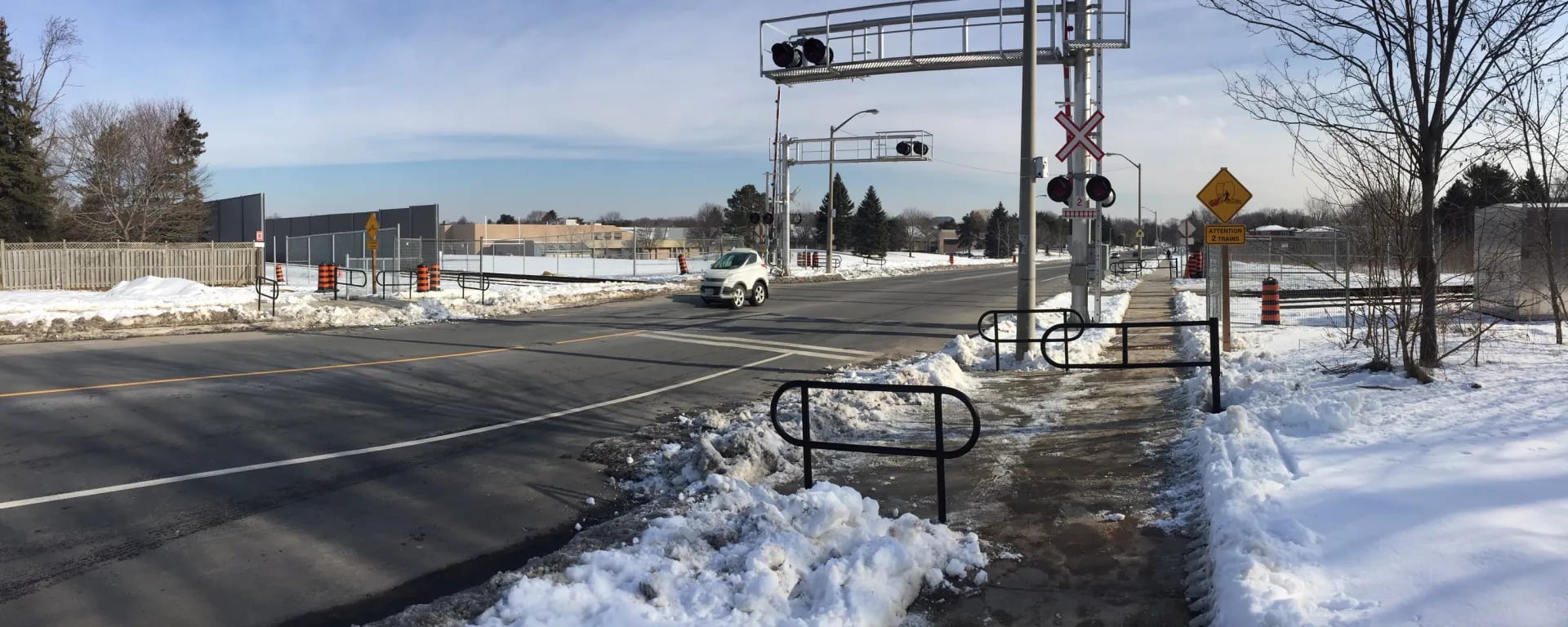Pedestrian crossing arms in full swing at Stouffville crossings
As Metrolinx continues to add a second track, maze gates move toward improving safety at crossings.
Apr 6, 2020
The warning signs are now pretty clear.
In January, ‘maze barriers’ and fencing were installed at three level crossings on the Stouffville rail corridor, as a next step towards improving pedestrian safety at Huntingwood, Havendale, and Finch crossings.
Now, dedicated crossing arms have been installed at both Havendale and Huntingwood pedestrian crossings, improving community safety even further.
“Originally, we didn’t think we were going to be able to start installing the pedestrian crossings until the summer.” – Neil Johnston, Metrolinx senior project officer for Track Infrastructure.
According to William Hong, Metrolinx project manager for Signals and Communications, the crossing arms at Finch are scheduled for construction this summer.
Maze gates – also known as ‘Z barriers’ – look fairly simple. But they change habits and fight distraction.
Pedestrian safety measures are extremely important especially when train service is being increased as part of the GO Expansion project. This photo was taken just before the snow melted this spring. (Metrolinx photo)
The maze barriers are designed to make people slow down as they navigate through the small maze. Then they also cause pedestrians to move left and right – allowing them to see both ways down rail tracks. This disruption in normal walking can help people pay closer attention to potential dangers.
“Originally, we didn’t think we were going to be able to start installing the pedestrian crossing until the summer, but we listened to the community, and to better address their safety concerns, we worked with our contractor to expedite the installation,” said Neil Johnston, Metrolinx senior project officer for Track Infrastructure.
Look both ways before crossing.
In addition to the maze gates and pedestrian arms, the crossings have other safety features including:
- Tactile plates, signage, painted lines for both pedestrians and vehicles, ringing bells, and flashing lights. Additionally the project team trimmed the surrounding vegetation to ensure that both vehicles and pedestrians had a clear line of sight to recently installed safety features.
- In the case of the maze gates, they also limit the speed of cyclists using the sidewalk by making them slow down, and ideally stop, before dismounting on approach to the rail crossing.
While the larger GO network of corridor and rail system can look like a maze, every improvement, including making crossings safer for communities and customers, is part of the larger puzzle piece of preparing the network for future ridership needs.
by Stacey Kenny Metrolinx corporate communications manager
